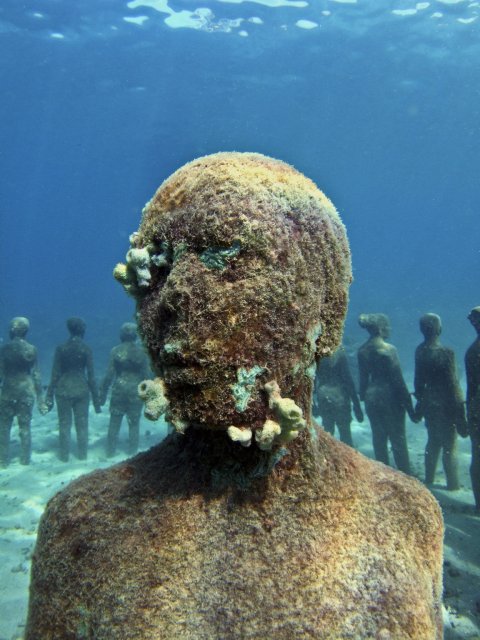(This is in relation to my ongoing Online Wayfinding System project.)
This is just a housekeeping post to post both presentations I’ve done so far for this project to the blog.
I. Proposal
II. Progress

(This is in relation to my ongoing Online Wayfinding System project.)
This is just a housekeeping post to post both presentations I’ve done so far for this project to the blog.

This is a summary post that serves as a snapshoot for the interesting things I recently learned through my research of the subject of Shipwrecks, as part of the Temporary Expert class.
1. Shipwrecks are accidental shelters for marine life. Predators and sedimentation are things that inhibit the growth and sprawl of smaller sea creatures that live on the ocean floor, which makes a change of the topographical quality of the ocean floor a welcome thing to its ecological system.
2. A beautiful example of this is the CondoFish project that was an accidental result of a the sinking of an anchored Mexican ship in the mid 1980s in the Playa Hermosa region in Costa Rica.
3. The ship sunk in shallow waters, and upon its discovery in 2002, the southern part of it, where ropes and nets were kept, was found to be completely covered by corals, small fish, and vegetation.
4. As a result, the CondoFish project came to being where efforts were made to design, test, and deploy artificial reefs in the (recreational divers abound) coast to both save and encourage marine life there.
5. One endangered species that is greatly benefitting from the structural properties of sunken ships is oysters. Their environmental value lies in their agency in consuming excess nutrient in the ocean floor, recycling them in some cases.
6. A study was conducted to find the optimum reef configuration to induce both a sustainable growth in an oyster community, as well as survival against predators, compared the effects of four arrangements according to their vertical-horizontal orientation, and whether they contain a shelter or not.
7. The advantage of a horizontal arrangement in an artificial reef is that it increases the chance of contact between abandoned oyster shells, and young larvae that seek to settle and grow in a reef. (Oysters generally nest on shells that are abandoned and they gradually make their own.)
8. However, in times of high sedimentation, a horizontal arrangement has the major disadvantage of lowering the number of growing oysters as the sediments can effectively kill the larvae.
9. Therefore, a vertical arrangement is superior in times of high sediment, even if the level of contact is decreased. This was proved by the study’s empirical results.
10. In terms of the effects of having a shelter in the structure of the reef, empirical results found that the number of settled oysters in arrangements with shelters is noticeably less than cases without. However, with the presence of predators, the percentage of surviving species is much higher than shelter-free reef arrangements.
11. Therefore, taking both the size of the communities within reefs as well as the percentage of surviving oysters in cases of predators and high sedimentation, vertical reef structures that contain sheltering alcoves are the best arrangement for oysters to prosper.
12. There has been a number of cases of catastrophic loss of oysters population as well as corresponding efforts to correct them.
13. Locally, the NY-NJ Harbor Estuary lost a great deal of its (once famously abundant) oyster population to water pollution, overfishing, and disease.
14. One major effort was the NY-NJ Harbor’s studies conducted between 2010 to 2013 to deploy and monitor a number of artificial reefs in a number of locations to assess the feasibility of a major restoration effort.
15. Another catastrophe is the almost complete depletion of the (reportedly delicious) Olympian oysters in the Bay area, specifically Tomales Bay.
16. This time the culprit is global warming: the increase of CO2 in the water results in increased acidity that effectively eat into the shells, making them more fragile and their oysters vulnerable to predators and sedimentation.
17. Another effort I am currently investigating is one in Al-Aqaba gulf in Palestine/Israel.
18. There seem to be an interesting pattern in the field of environmental art where artists are making meaningful work by creating artificial reefs.
19. One of the most inspiring instances is the work of Jason deCaires Taylor, who made a series of surreally beautiful statues that are not only aesthetically pleasing, but environmentally conductive in two ways!
20. The statues have the obvious value as artificial reefs (for corals mostly), but they also serve as a distraction for the recreational divers from existing, natural reefs.
21. (The statues have also the communal value of being made from using persons from the fisherman village around the community in the sculpture casting process.)
22. Another local project is the Oyster-tecture project (currently invasatigating).
23. Also, the Manahatta project which even comes with its own curriculum of activties for kids that I hope to follow.
24. An amazing, local artist who I am hoping to meet soon is Colleen Flanigan. Her underwater work even includes electrical components (!!).
25. And don’t get me started with the aesthetics of coral reefs…
26. There is an Instructable for everything, including How To Make Your Own Artificial Reef (courtesy of the CondoFish guys mentioned above).
27. There are vertical ships too!
(Photo on top is Jason deCaires Taylor’s Viccisitudes Sculptures. [I don’t own the rights to this photo. I’m only an overworked student, please don’t sue me!])